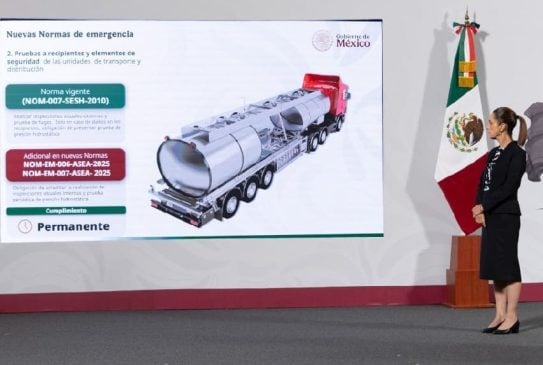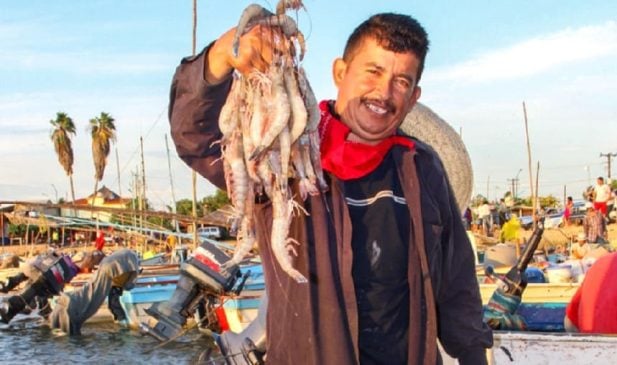Mexico City, Mexico — The INAH celebrates the diversity of Canada’s Indigenous peoples with a photo exhibition. The Pow Wow: First Nations: Dignity and Modernity is on display until August 2025 at the National Museum of World Cultures.
The Canadian exhibition consists of 44 portraits and two videos by Canadian photographer Richard Geoffrion. The beat of a drum and the wearing of a ceremonial regalia are fundamental elements of the pow wow, a tradition of the Native Americans.
They gather to dance, sing, socialize and celebrate their cultures, encompassing concepts such as shaman, guide, vision and counsel. This celebration gave rise to the exhibition The Pow Wow: First Nations: Dignity and Modernity by photographer Richard Geoffrion, at the National Museum of World Cultures (MNCM).
The exhibition, consisting of 44 portraits and two videos which opened on May 28, 2025, and is organized by the National Institute of Anthropology and History (INAH) in collaboration with the Canadian Embassy as part of the 60th anniversary of the institution.
On behalf of the Director General of the INAH, Diego Prieto Hernández, the national coordinator of Museums and Exhibitions, Juan Manuel Garibay, thanked the artist for his contribution to this “cultural window,” whose lens was able to capture the pow wow “in the very circle of living, dynamic, and moving cultures.”

In his message, the Canadian ambassador to Mexico, Cameron MacKay, explained that this is the third time they have shared an exhibit at the MNCM, celebrating the indigenous peoples of his country as it is of utmost importance to remember their legacy and “recognize their place in our history as part of our reconciliation process.”
“We share with Mexico the desire to honor our Indigenous roots, our history and ancestral knowledge, as well as to continue protecting and promoting the rights of Indigenous peoples,” he said.
MNCM Director Alejandra Gómez Colorado indicated that the collaboration with Richard Geoffrion and the Canadian Embassy highlights their shared interests regarding the importance of the Indigenous peoples of North America.
“The beauty of his work presents moving cultural expressions from Canada’s ancestral communities and invites us to experience this vital space, the pow wow which celebrates its families, its religious beliefs and its splendid artistic expression,” she said.
She also announced that, as part of Canada’s Indigenous History Month, there will be parallel activities that include gender-focused guided tours and a Canadian film screening, to be held on Fridays in June.
The exhibition’s curator, Claudia Harris, agreed that the work’s aesthetic inspires a deeper understanding of Canada’s Indigenous peoples and their ways of celebrating life.
“It offers us a timely opportunity to appreciate their rich aesthetics and learn about the historical values, traditions, and resilience of these First Nations,” she commented.

In his message, Richard Geoffrion expressed his gratitude for the opportunity to share these “human landscapes” with the public and expressed his hope that the exhibition “will help transcend our prejudices and enrich our understanding of the modernity of the traditions of indigenous peoples.
“I hope that the dissemination of this project will be a message of hope for the understanding and survival of their cultures.”
For Canada’s First Nations, the pow wow is a space for community, identity, history, and resilience, where music and dance become a form of cultural and spiritual expression. It also represents an opportunity to share and show solidarity in the face of adverse events and celebrate good news.
There are two types of pow wow. The traditional type where regalia are not mandatory, and there are no competitions or prizes, but which represent a great wheel of the universe, called the “medicine of existence.”
The competitive type offers cash prizes for the best dancers and musicians, divided into categories based on age, gender, and types of singing and dancing.

To create this exhibition, Richard Geoffrion attended 20 pow wows and captured 9,000 images spanning a 12,000-kilometer route across reserves in Quebec and Ontario. The photos are unretouched and unpost-produced, and feature women and men from the Lakota, Mohawk, Oneida, Abénaki, Abitiwinnik, Anishnabe, Assiniboine, Atikamekw, Chippewa, Cree, Innu, Malecite, Métis, Micmac, Ojibwe, and Wendat nations, as well as Indigenous peoples who have come to Canada, such as the Shoshone, Hopi, Yoreme and Navajo.


